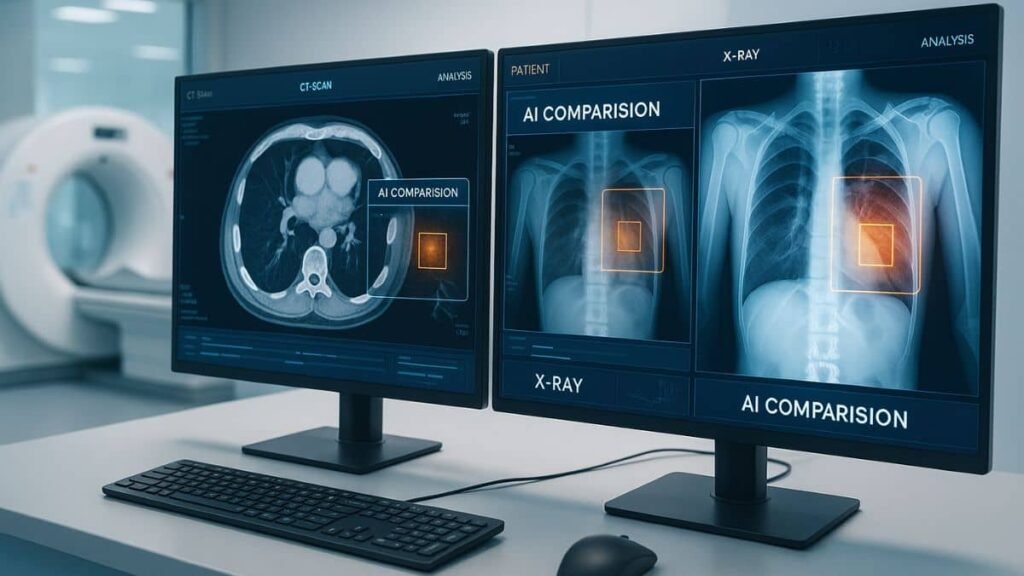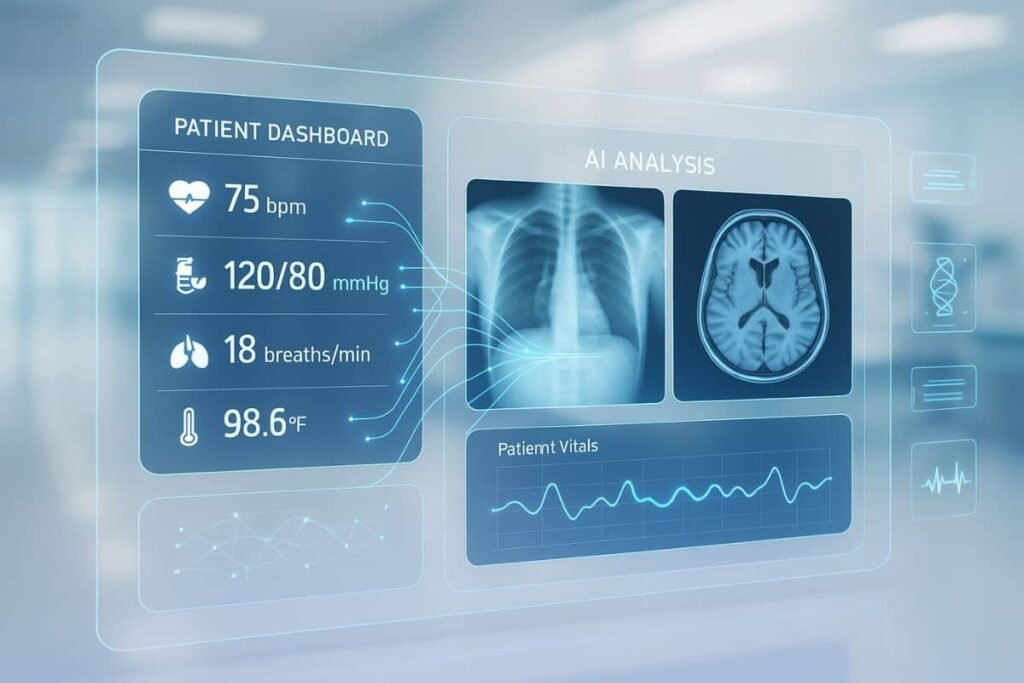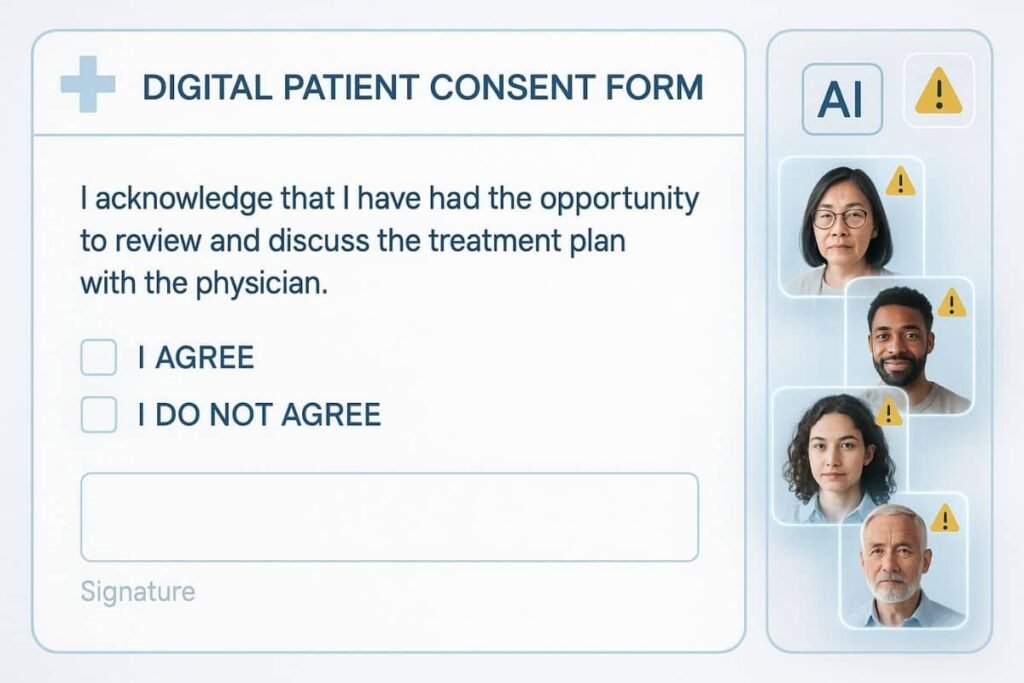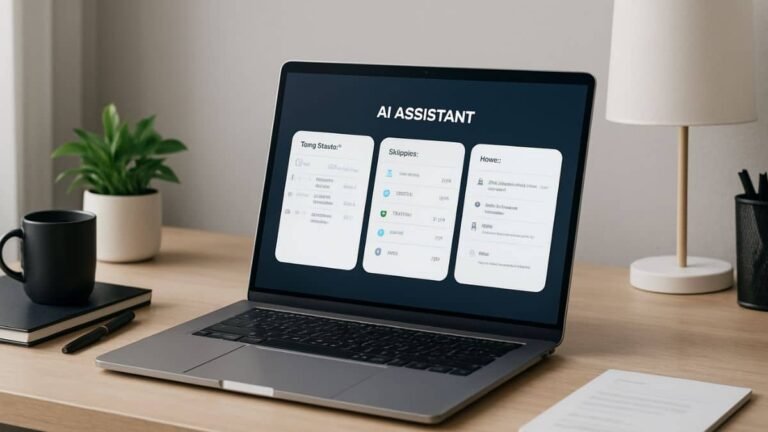Address
251 Little Falls Drive, Wilmington, DE 19808, United States

Can a machine really spot diseases before doctors can? With the rise of AI in medical imaging, the answer is increasingly yes. From faster scans to earlier diagnoses, artificial intelligence is redefining how we detect health problems. In this article, we’ll explore how this technology is ushering in a new era of early detection, and why it matters more than ever.
Table of Contents
Understanding the role of AI in modern healthcare
Artificial Intelligence (AI) has become more than just a tech buzzword, it’s now a driving force in healthcare innovation. At the heart of this revolution lies AI’s ability to analyze vast amounts of medical data with speed and precision. From identifying patterns in diagnostic images to predicting patient outcomes, AI is reshaping how healthcare providers detect and treat diseases.
Why early detection matters more than ever
Catching diseases early can be the difference between life and death. Conditions like cancer, neurological disorders, and cardiovascular disease often begin subtly, making them hard to catch in routine checkups. This is where AI shines. By enhancing image clarity and recognizing patterns that might go unnoticed by the human eye, AI is helping doctors spot abnormalities at their earliest stages, long before symptoms appear.

How AI in medical imaging enhances capabilities
Medical imaging, including MRI, CT scans, and X-rays, is a cornerstone of diagnostic medicine. With AI in the picture, the process becomes more intelligent and efficient.
Precision imaging: Spotting subtle signs earlier
Traditional imaging relies heavily on the experience and attentiveness of radiologists. AI in medical imaging augments this by highlighting microscopic changes in tissue structure or growth patterns that might be missed. These subtle indicators can be critical in diagnosing aggressive cancers or degenerative diseases before they progress.
Speed and efficiency: Reducing diagnostic delays
One of AI’s biggest advantages is speed. Algorithms can process thousands of images in minutes, flagging concerns instantly. This means shorter wait times for patients, faster treatment decisions, and more efficient workflows for hospitals.
Real-world examples of AI in early diagnosis
AI is not just theoretical, it’s already saving lives.
Detecting cancer at stage zero
AI-powered systems have shown remarkable success in identifying breast cancer at Stage 0, where traditional methods might fail. Tools like Google’s LYNA have demonstrated higher sensitivity in detecting metastatic breast cancer cells in lymph nodes.
AI tools in radiology: CT, MRI & X-ray applications
From lung scans to brain MRIs, AI assists radiologists in highlighting areas of concern and offering second-opinion insights. This not only improves diagnostic accuracy but also gives healthcare providers more confidence in their evaluations.
For a deeper dive into current research, read How AI Is Changing Medical Imaging from the National Institutes of Health.
Benefits for doctors, patients, and healthcare systems
The ripple effects of AI extend beyond diagnostics.
Empowering radiologists, not replacing them
Contrary to popular belief, AI is not here to replace doctors. Instead, it serves as a digital assistant, enhancing accuracy, reducing burnout, and freeing up time for more patient-centered care. Radiologists who embrace AI often report greater confidence in their diagnoses.
Personalized treatment pathways through early insight
Earlier detection opens the door to personalized medicine. With precise information available sooner, doctors can tailor treatment plans that are more effective and less invasive. This improves patient outcomes and often reduces long-term healthcare costs.
Challenges and ethical concerns of AI diagnosis
Despite its promise, AI in medical imaging is not without its hurdles.
Data privacy and patient consent
Medical imaging data is sensitive. AI systems require large datasets for training, raising concerns about privacy, informed consent, and data security. Healthcare providers must ensure that data-sharing practices are ethical and compliant with regulations like HIPAA.
Bias in algorithms and medical inequity
AI is only as fair as the data it learns from. If training datasets lack diversity, the AI may underperform in diagnosing certain populations. This could widen existing healthcare disparities unless deliberate efforts are made to build inclusive, representative data pools.

What the future holds for AI-Driven diagnostics
The future of AI in medical imaging is nothing short of inspiring. With continued advancements in machine learning and access to larger, more diverse datasets, AI will likely evolve into a standard co-pilot for diagnostic professionals.
Want to explore how AI is transforming the bigger healthcare landscape? Check out AI in Healthcare or discover how it’s reshaping your daily routines in AI in Everyday Life.
AI in medical imaging isn’t just a futuristic concept, it’s happening now, and it’s transforming early diagnosis in profound ways. By enhancing speed, accuracy, and accessibility, AI empowers healthcare providers and improves outcomes for patients. As the technology evolves, one thing is clear: we’re entering a smarter, faster, and more proactive era of medicine.










